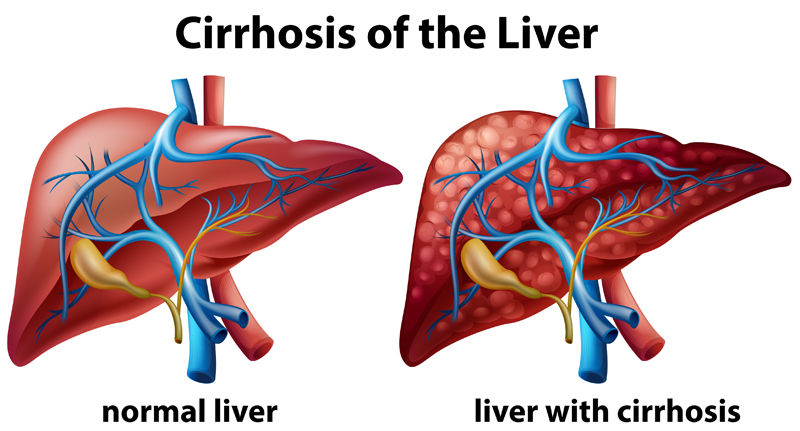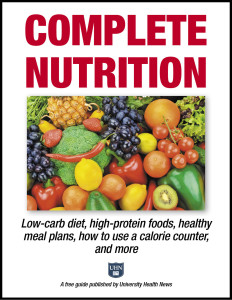Cirrhosis: Understanding One of the Greatest Threats to Your Liver
Weighing in at about three pounds, your liver is the body’s second largest organ behind the skin. It is also one of our hardest-working organs. Some of its major jobs include breaking down fat in preparation for digestion and absorption, and processing blood that leaves the stomach and intestines. The body cannot survive without a healthy and fully functional liver. One of the biggest threats to this big organ is cirrhosis, a slowly progressing disease in which liver tissue becomes inflamed, thickened, and scarred, preventing it from performing its essential function. According to The American Liver Foundation, cirrhosis is deadly and kills 25,000 to 30,000 people a year in the United States.
Alcohol damages the liver by impeding the metabolism of protein, fats, and carbohydrates. In fact, alcoholism is the leading cause of cirrhosis followed by hepatitis C in the U.S. and hepatitis B worldwide. Other causes for cirrhosis are rare.
Eat Right, Starting Now!
Download this expert FREE guide, Complete Nutrition: Low-carb diet, high-protein foods, healthy meal plans, how to use a calorie counter, and more.
Create healthy meal plans and discover the Superfoods that can transform your plate into a passport to better health.
How Cirrhosis Develops
In the early stages of cirrhosis, there are few symptoms. As it advances, symptoms of fatigue, weakness, weight loss, abdominal pain, and spider-like veins on the skin appear. Eventually, edema (swelling) affects the legs and trunk, and the skin and eyes take on a yellow tone from jaundice.
Although cirrhosis is usually diagnosed from the symptoms, a physical exam that presents a hard, enlarged liver, and laboratory tests that reveal specific enzymes will support the diagnosis. A needle biopsy will confirm the condition beyond doubt and a CT scan, ultrasound, or MRI can help determine the extent of the damage.

Cirhossis of the liver, marked by external scarring of the organ, which limits liver function. Stopping all alcohol intake is usually the first line of defense.
Can Cirrhosis Be Cured?
Cirrhosis is irreversible, so treatment is directed toward stopping the progression and managing symptoms and complications. If alcoholism is the cause, the first step is to completely abstain from alcohol. In fact, no one with cirrhosis, regardless of the cause, should ever drink alcohol. If cirrhosis is caused by hepatitis, this will require medication specific to the type.
People with cirrhosis should eat a diet rich in fruits, vegetables, whole grains, and beans and low in fat, sodium, and animal protein to decrease buildup of toxins. Light exercise is also recommended. Treating symptoms may include diuretics to reduce edema.
In severe, uncontrollable cases, a liver transplant may be the only option.
Originally published in May 2016 and updated.
The post Cirrhosis: Understanding One of the Greatest Threats to Your Liver appeared first on University Health News.
Read Original Article: Cirrhosis: Understanding One of the Greatest Threats to Your Liver »
Powered by WPeMatico


